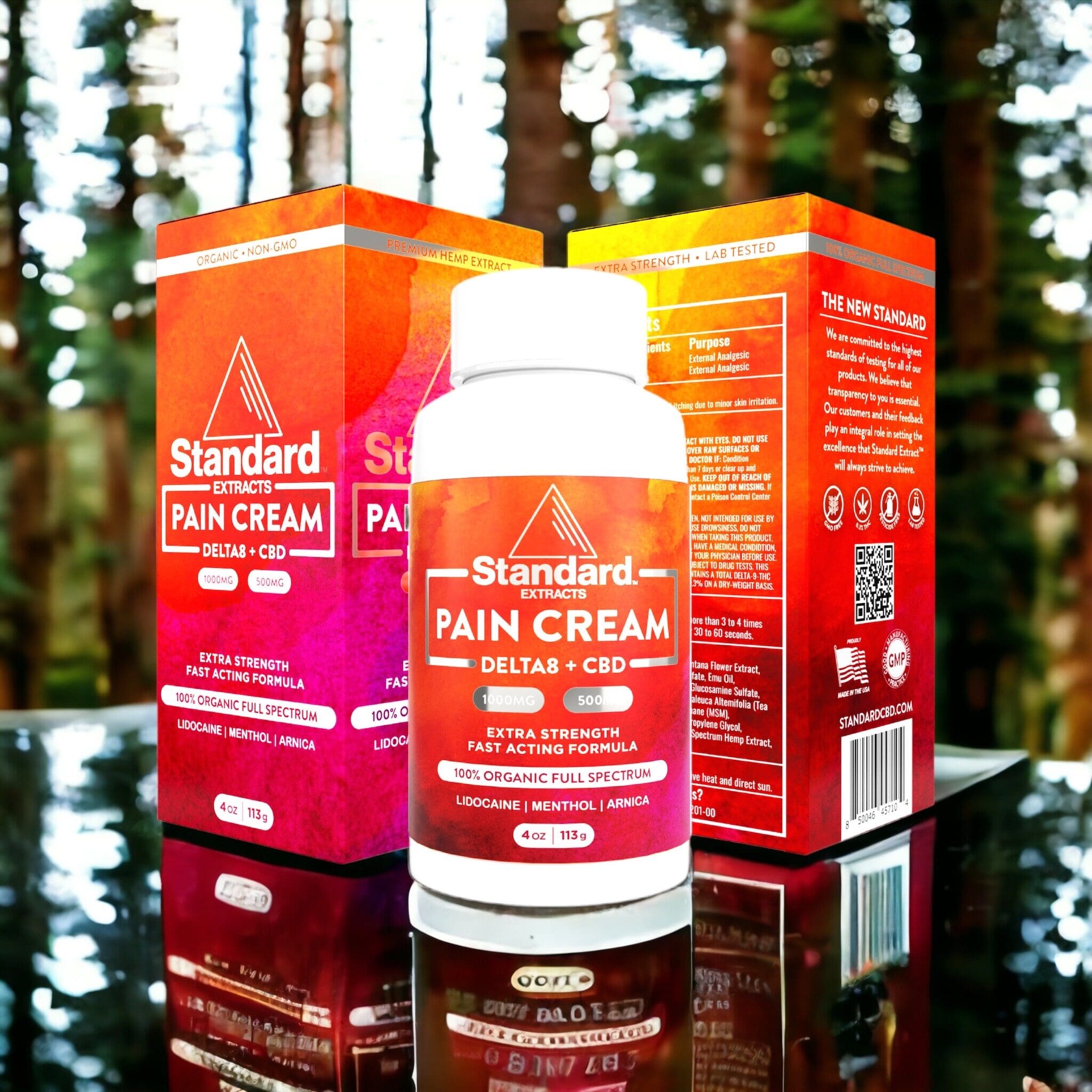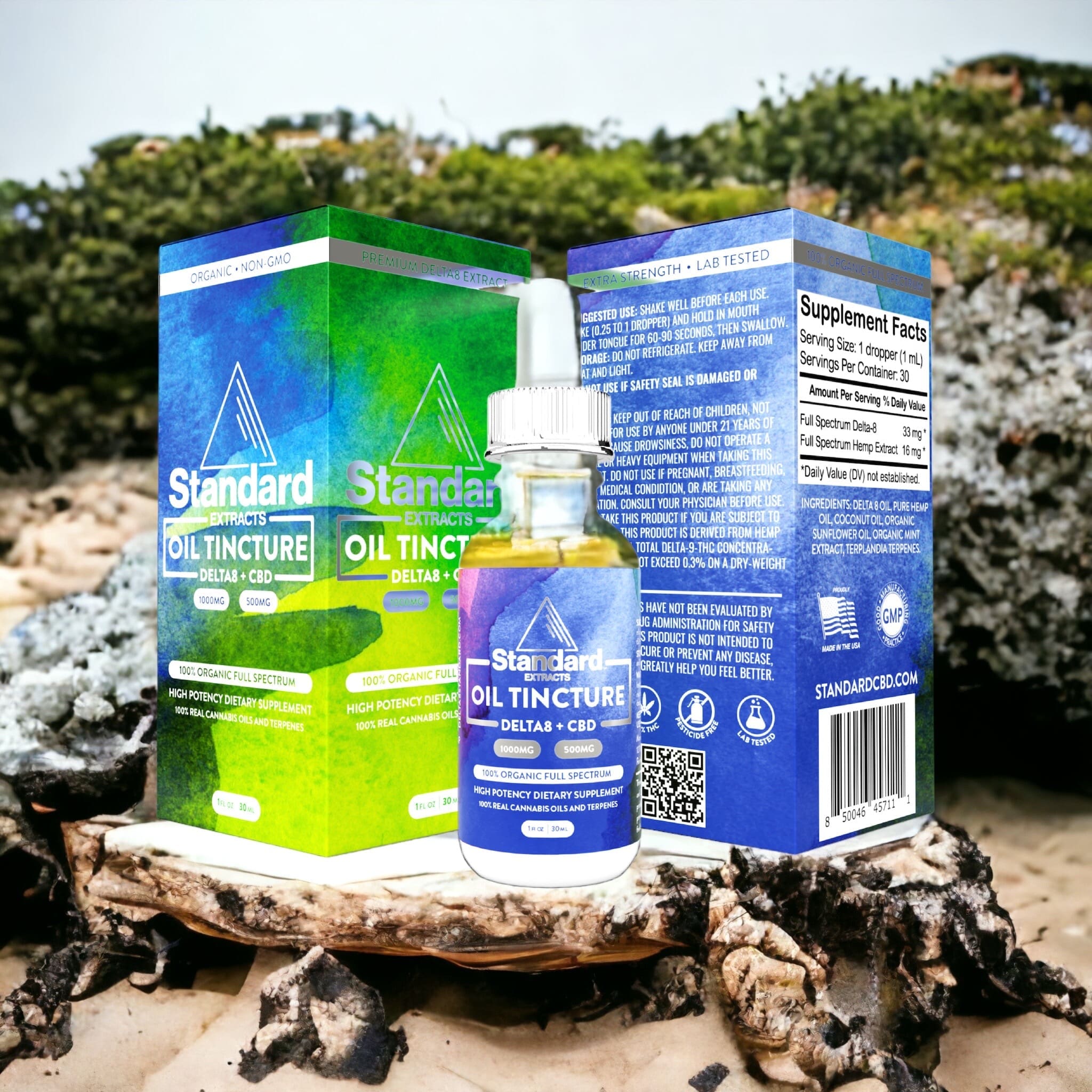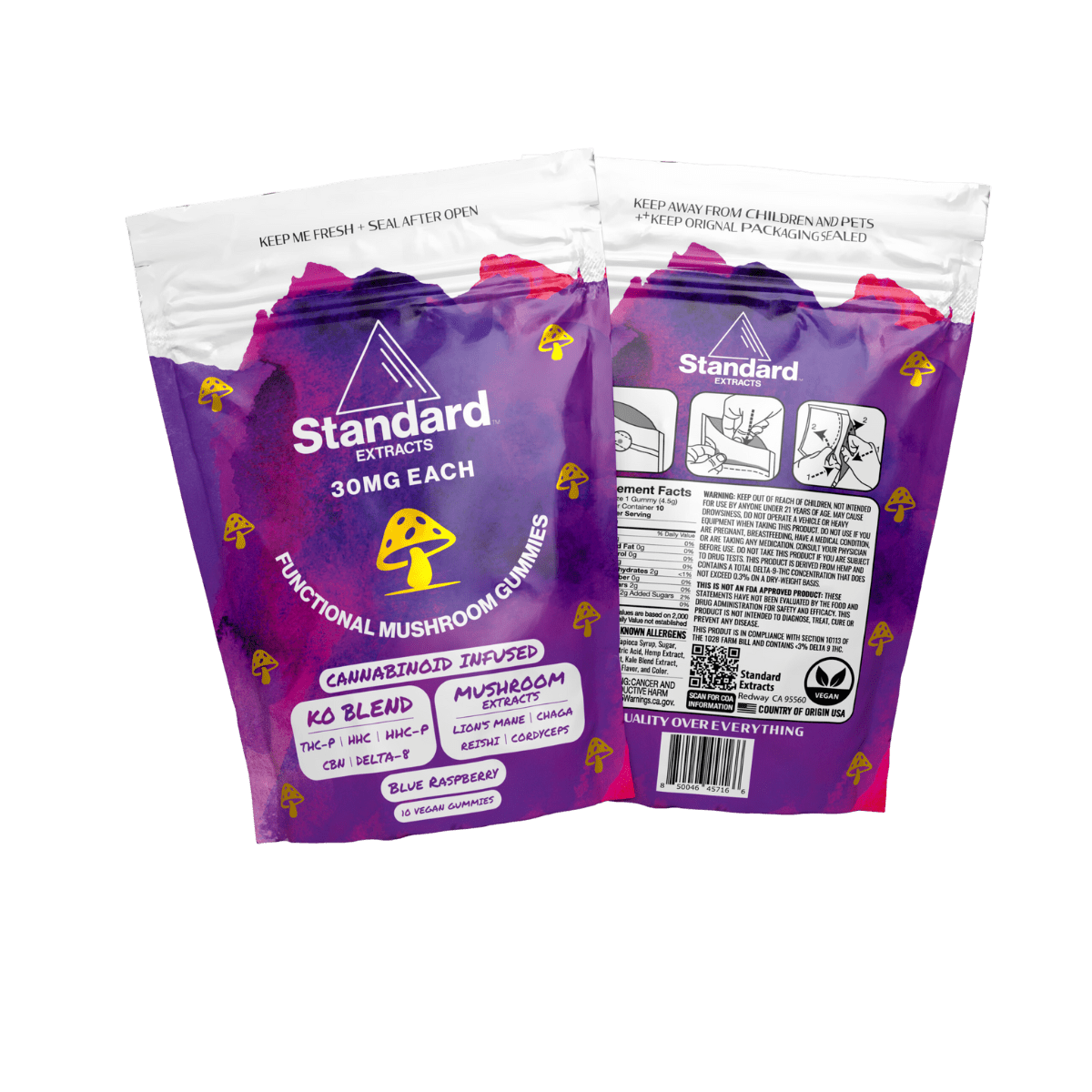

Amanita Muscaria for Anxiety: How Mushrooms & CBD Helped Me Heal at 60
Turning Sixty: The Voice That Said “Run” May 18, 2025 — 6:07 a.m. The bathroom light flashed as I studied the

Post-surgery recovery can often feel like an uphill battle. Pain, discomfort, and the disruption of your daily routines can be quite challenging. However, the journey to healing doesn’t have to be a rocky road. Welcome to your comprehensive guide for managing post-surgery pain at home, ensuring a more comfortable environment and a smoother road to recovery. We’ll explore various strategies, from non-pharmacological pain relief methods to optimal wound care, and how you can create the best post-operative care plan for your needs.






Only the finest goes into our products. You deserve it.
Navigating the path of post-operative care begins not at the comfort of one’s home, but inside the confines of the hospital itself. It’s an orchestrated journey that is initiated well before the discharge procedure commences. It’s akin to laying the groundwork for a construction project; the plan is crucial for a seamless and successful transition from the hospital bed to the homely comforts.
Even before you are prepped for leaving the hospital, your healthcare team, composed of surgeons, nurses, physiotherapists, and sometimes even nutritionists, starts charting out a comprehensive and personalized recovery plan. This blueprint is your guiding star, lighting the way to a structured and effective recovery.
Included in this recovery plan are elements like a recovery timeline and post-op checklists. The recovery timeline offers a general forecast of the recovery process, illustrating the stages you will likely pass through in the days and weeks following surgery. It may include estimates of when you might be able to return to regular activities, like work or exercise. While every individual’s recovery process is unique, this timeline provides a broad framework for setting expectations and tracking progress.
On the other hand, post-op checklists offer a more detailed and actionable guide for day-to-day care. It typically includes instructions on wound care, medication schedules, dietary restrictions or recommendations, signs of complications to watch out for, and guidelines for physical activity. It can also detail when and how to seek medical help if needed.
These elements, combined, serve as your initial stepping stones towards effective post-surgery pain management. They provide a sense of direction and control, thereby alleviating anxieties related to recovery. By adhering to the suggested plan and maintaining an open line of communication with your healthcare providers, you equip yourself better to navigate the post-operative phase, manage pain more efficiently, and set the stage for a smoother, faster recovery at home.


Follow-up visits post-surgery play a crucial role in the continuum of your care and recovery journey. The time and schedule for these visits are typically laid out by your doctor or medical team, designed to ensure a consistent and structured check on your recovery progress. They form an integral part of your roadmap to recovery, serving as essential pit-stops that should not be overlooked or missed.
Each of these visits provides a valuable opportunity for your healthcare providers to thoroughly assess your recovery. This can include checking the healing of surgical wounds, monitoring your response to any prescribed medications, evaluating physical recovery, and even assessing mental health post-surgery. For instance, the medical team may check for any signs of infections at the surgical site or adverse reactions to medications, both of which can significantly impact your recovery.
These visits also act as checkpoints where adjustments to your recovery plan can be made if necessary. For example, your doctor may change your medication or dosage based on your pain levels, side effects, or progress in recovery. Likewise, physical therapy or rehabilitation exercises might be revised to match your healing progression.
Moreover, follow-up appointments serve as a platform for you to voice any concerns or difficulties you are experiencing. Whether it’s an issue with pain management, new or worsening symptoms, problems with medication, or even emotional struggles, these visits are your chance to seek advice and reassurances.


Only the finest goes into our products. You deserve it.
Finally, follow-up visits can provide timely intervention if complications arise. Any deviations from the expected recovery path can be promptly detected, and corrective measures can be taken. This could be as simple as adjusting your pain management strategy, or in some cases, identifying the need for further medical or surgical intervention.
In essence, follow-up visits serve as your safety net in the recovery process. They ensure that your journey to recovery is monitored, guided, and adjusted as needed, promoting effective pain management, quickening the healing process, and reducing the risk of potential complications.


Transforming your home into a conducive environment for post-surgery rehabilitation goes a long way towards aiding your recovery. The healing process is not just about medication and professional care but also significantly hinges on the comfort, accessibility, and overall tranquility of your personal space. As such, it’s essential to design a home recovery plan that caters to these aspects.
Creating a comfortable environment at home essentially involves tailoring your space to meet the specific demands of your post-surgery recovery. This could mean adjusting the setup of your living area or bedroom to accommodate for reduced mobility, or making certain modifications to ensure easy access to essentials.
One of the first steps to consider is arranging your most frequently used items within easy reach. This could include medications, water, remote controls, books, or phone. By doing so, you eliminate the need for unnecessary exertion or movement, particularly helpful during the initial stages of recovery.
In anticipation of limited mobility or physical restrictions, it may be beneficial to consider temporary arrangements such as having a bedside commode, or setting up a sleeping area on the ground floor if stairs could pose a challenge. Having your recovery area on the same level as the kitchen and bathroom can simplify your daily routine and reduce the risk of falls or strain.
Another significant aspect of home preparation is planning for help. Tasks that you usually carry out with ease may become more challenging post-surgery, be it cooking, cleaning, shopping, or even personal care tasks such as bathing. Having a friend, family member, or hired help during this period can make a significant difference in managing these daily tasks without compromising your recovery.
Comfort in your home recovery setting is not just about physical ease, but also about creating an environment that promotes peace and positivity. This could involve having fresh flowers, comfortable pillows, or even soft, calming music. A serene atmosphere can help reduce stress levels, thereby allowing your body to channel more energy towards healing.
In essence, home preparation is all about foreseeing and navigating potential hurdles that might interfere with your recovery. With careful planning, you can create a home environment that not only eases your transition from hospital to home but also actively fosters your healing process, ultimately ensuring a smoother and more comfortable road to recovery.


The management of medication in your post-operative period is one of the cornerstones of a successful recovery. It can make a significant difference in pain levels, comfort, and overall progression towards healing. However, it’s crucial to remember that while medicines can be potent tools in your recovery journey, they require careful handling and close attention.
Following surgery, it’s typical for your doctor to prescribe specific medication tailored to your needs to help control and manage pain. This could range from mild painkillers to stronger opioids, depending on the intensity of your pain and the nature of your surgery. As the patient, it’s vital to take this medication precisely as directed by your healthcare provider. Adhering to the prescribed doses and timing helps maintain consistent pain relief and aids in preventing potential complications, such as medication overuse or dependency.
Alongside following the medication regimen, it’s crucial to stay vigilant about potential side effects. All medications can have side effects, and pain medications are no exception. These can vary from minor annoyances like dizziness or nausea, to more severe issues such as respiratory difficulties or allergic reactions. If you notice any adverse effects or changes in your health, it’s important to notify your healthcare provider immediately. They can adjust your medication regimen accordingly to help reduce these side effects, ensuring your safety and comfort.
Over-the-counter pain relievers can indeed offer supplemental relief and can be a beneficial part of your pain management plan. However, it’s critical to consult your doctor before incorporating any such medication into your regimen. They can provide guidance on safe and effective use, and help prevent interactions with your prescribed medications.
It’s important to remember that while medication plays a significant role in pain relief, it is not the only solution. Non-pharmacological methods should also be integrated into your post-surgery pain management plan. These could include relaxation techniques, gentle exercises, heat and cold therapy, or even mind-body techniques like meditation or guided imagery. Such methods can help reduce reliance on medication, mitigate side effects, and provide a more holistic approach to pain management.
To sum up, effective medication management requires a balance of adherence to prescriptions, awareness of potential side effects, and integration of non-medication strategies. With careful management, medication can be an effective tool to control post-surgery pain, ensuring a smoother and more comfortable recovery journey.


Mind-body techniques are a powerful and often underutilized tool in the realm of pain management. These techniques leverage the intricate connection between our minds and bodies, harnessing mental faculties to alleviate physical discomfort and promote healing. Techniques such as meditation, deep breathing exercises, and gentle yoga have been shown to have a profound impact on pain management, making them a valuable part of the post-operative care arsenal.
Meditation is one such technique that has been increasingly recognized for its potential in pain relief. The practice of meditation involves focusing the mind, often by concentrating on a specific thought, object, or activity, to train attention and awareness, and achieve a mentally clear and emotionally calm state. This state of calm can help to distract from pain, lower stress levels, and increase pain tolerance. Furthermore, scientific research backs this up. A study published in the journal Pain Medicine revealed that mindfulness meditation could significantly alleviate acute pain by changing the way the brain perceives pain[^1^].


Delta-8 CBD Gummies
with 250mg & CDT
Only the finest goes into our products.
You deserve it.
Deep breathing exercises are another effective method of managing pain. These exercises can help to relax the body, reduce muscle tension and decrease stress, all of which can exacerbate pain. Moreover, the increased oxygen flow promoted by deep breathing can improve healing, further assisting the recovery process.
Gentle yoga can also be beneficial for those in recovery. This ancient practice combines physical postures, breathing exercises, and meditation to promote physical and mental well-being. Gentle yoga can help stretch and strengthen the body, improving mobility and reducing pain. The meditative aspect of yoga can also help manage the psychological impacts of surgery, reducing stress and anxiety.
Aside from their direct impact on pain, these techniques can also bring about secondary benefits that further aid recovery. For instance, they can help improve sleep quality, a crucial factor in the healing process. They also promote better mental health, helping patients to cope with the emotional and psychological challenges that can arise post-surgery.


Physical therapy and gentle exercises represent an active approach towards post-operative recovery. They serve as valuable tools that can significantly enhance your healing process, improving strength, mobility, and overall wellness.
Physical therapy is a key component of post-operative care. A physical therapist is a specialist in improving mobility and function and can tailor a regimen to your specific needs and recovery goals. This individualized approach ensures that the therapy is as effective as possible and reduces the risk of further injury or complications.
Post-operative physical therapy often begins in the hospital and continues at home. Your physical therapist will provide you with specific exercises designed to progressively restore your strength, flexibility, and range of motion. For example, if you had knee surgery, you might do leg lifts and ankle pumps to improve muscle tone and joint flexibility. These exercises can reduce pain and stiffness, helping you regain function and independence more quickly.
Gentle exercises outside of prescribed physical therapy can also play a crucial role in your recovery. Simple activities like walking can be highly beneficial, as they improve circulation and promote healing. Improved blood flow can help flush out toxins, transport nutrients to the wound site, and speed up the healing process.
Walking post-surgery can also lower the risk of complications like blood clots (deep vein thrombosis), a common concern after certain types of surgery. Regular movement encourages blood flow, making it harder for clots to form. Moreover, walking can also improve digestion, reduce constipation, and boost your mood by stimulating the release of endorphins, the body’s natural painkillers and mood elevators.
It’s essential, however, to follow your healthcare provider’s guidance regarding exercise post-surgery. They can advise you on what types and amounts of activity are appropriate for your condition and recovery stage. Starting slowly and gradually increasing the duration and intensity of exercise as your recovery progresses is often the safest approach.
In conclusion, physical therapy and gentle exercises are vital aspects of post-operative care. By engaging in these activities as guided by your healthcare team, you can actively contribute to your healing process, speeding up your return to regular activities and overall wellness.


Applying ice packs or warm compresses can offer temporary relief from post-surgery pain. Cold therapy is excellent for reducing inflammation and numbing the area around the wound, while heat therapy can relax muscles and enhance blood flow. However, always check with your healthcare provider before applying heat or cold to the surgical area.


Caring for your surgical wound is an indispensable part of the recovery process. Proper wound care prevents infections, facilitates healing, and can even influence the appearance of the eventual scar. It necessitates meticulous attention to cleanliness, an understanding of how to change dressings, and the ability to identify signs of potential complications.
When it comes to cleaning the wound, it’s crucial to follow the specific instructions provided by your healthcare team. Typically, this involves washing your hands thoroughly before touching the wound area, gently cleaning around the wound with warm water and mild soap, and patting the area dry. Avoid scrubbing the wound itself to prevent irritation and damage to new skin forming. Also, while a clean wound is a healthy wound, it’s essential not to overdo it, as excessive cleaning can impede the healing process.
After surgery, you’ll typically have a dressing covering the wound to protect it from bacteria and support the healing process. Dressings can absorb discharge from the wound and keep the area moist, which can speed up healing. The frequency and method of changing these dressings will vary depending on the type of surgery, the size and location of the wound, and your doctor’s instructions. You might be advised to change dressings daily or every few days, always using clean, sterile supplies.




Only the finest goes into our products. You deserve it.
A vital part of wound care is being aware of signs of potential complications. While some redness and swelling around the wound are typical in the early stages of healing, worsening redness, increased pain, pus or foul-smelling discharge, heat in the surrounding area, and fever can be signs of an infection. On the other hand, if the wound edges are pulling apart, or if you notice an increase in swelling or darkening around the wound, this could indicate a wound dehiscence (separation of the wound edges) or necrosis (death of tissue around the wound), both of which require immediate medical attention.
In conclusion, proper wound cleaning and dressings care are critical aspects of post-operative care. By following your healthcare team’s instructions carefully, you can contribute to your wound’s optimal healing, prevent complications, and potentially minimize scarring. Being vigilant and proactive in wound care can make a significant difference in your recovery and overall post-surgery outcomes.


Proper nutrition after surgery is an integral part of your recovery process. A well-balanced diet can provide your body with the essential nutrients it needs to heal, fight off infection, and regain strength. Particularly, your post-surgery nutrition should emphasize proteins, fiber, and hydration.
Proteins play a vital role in tissue repair and wound healing. They are the building blocks for skin, muscle, bone, and other tissues, and are also essential for the production of antibodies that can fight off potential infections. Sources of protein include lean meats, fish, eggs, dairy products, legumes, and nuts. If you’re vegetarian or vegan, make sure to include plenty of plant-based proteins like lentils, chickpeas, quinoa, and tofu in your diet.
Fiber is another crucial nutrient in your post-operative diet. Some pain medications can cause constipation, a common but uncomfortable side effect. Including plenty of fiber in your diet can help alleviate this. Fiber-rich foods help keep your digestive system active and moving, reducing the chance of constipation. These include fruits, vegetables, whole grains, and legumes. Adding fiber gradually to your diet and drinking plenty of fluids can enhance fiber’s effectiveness.
Hydration is just as important as any nutrient in your diet. Staying well-hydrated is essential for nearly all body functions, including digestion and absorption of nutrients. Adequate hydration helps to prevent constipation, keeps your kidneys functioning well, and even promotes skin health, which is beneficial for wound healing. Aim to drink plenty of fluids each day, focusing primarily on water but also including other fluids like soups, broths, milk, and herbal teas.
In some cases, your healthcare provider might recommend specific vitamins and minerals to aid in your recovery. For instance, vitamin C is necessary for collagen formation, a critical part of wound healing, and zinc can help with the immune function and tissue repair.
In conclusion, paying attention to post-surgery nutrition can significantly enhance your recovery process. By incorporating a balance of proteins, fiber, and maintaining good hydration, you can actively aid your body in repairing tissues, fighting off infections, and regaining your strength and vitality after surgery. Always remember to consult your healthcare provider or a dietitian for personalized advice tailored to your individual needs and conditions.


The use of elevation techniques in post-operative care, particularly following surgeries involving the limbs, can be an incredibly effective strategy to manage swelling and enhance healing. Elevation leverages the power of gravity to optimize blood flow and reduce inflammation, facilitating a smoother recovery process.
Elevation works on the simple principle of positioning the affected area at a level higher than the heart. This positioning encourages excess fluid, which often builds up after surgery and causes swelling, to drain away from the area. Not only does this help to reduce swelling, but it also minimizes discomfort and can speed up the healing process.
Moreover, elevation can improve venous return – the flow of blood back to the heart – enhancing overall circulation. Better circulation ensures an efficient supply of oxygen and nutrients to the healing tissues and the removal of waste products. This is crucial for effective healing and recovery after surgery.


Only the finest goes into our products.
100% natural ingredients. You deserve it.
The benefits of elevation are often highlighted in the well-known RICE method (Rest, Ice, Compression, Elevation) recommended for managing injuries and post-operative swelling. Here’s how it works:
While the RICE method is a time-tested technique for dealing with post-surgery swelling and pain, it’s always important to follow your healthcare provider’s specific instructions on how to apply this method in your recovery plan. Each surgery is unique and may require a tailored approach for optimal healing.
In conclusion, the elevation technique represents a simple yet highly effective strategy for managing post-operative swelling and enhancing healing. By incorporating this method, alongside rest, ice, and compression, you can actively contribute to a smoother and more comfortable recovery process.


When it comes to healing after surgery, rest and sleep are paramount. They provide the body with a much-needed pause, a period of tranquility where the body can direct its energy towards healing and tissue regeneration. Ensuring you’re getting enough quality sleep post-surgery is not just a luxury—it’s a necessity for an efficient and effective recovery.
Rest is your body’s primary way of conserving energy. After surgery, your body undergoes a significant amount of stress and needs to recover not just from the physical trauma of the operation, but also from the effects of anesthesia and medications. Rest allows your body to channel its resources towards these healing processes. It’s advisable to listen to your body and take it easy, especially in the first few days following surgery. Overexertion can lead to complications and delay recovery.
Sleep, on the other hand, is a more profound state of rest. It is a dynamic period of healing and regeneration. While we sleep, our bodies enter a cycle of repair and restoration. Growth hormones are released, which aid in tissue repair and healing. Immune system activity is also enhanced during sleep, helping your body fight off potential infections and disease.
Sleep provides more than just physical benefits; it’s also vital for our mental well-being. Good sleep can improve mood, reduce anxiety, and promote a more positive outlook—all of which can positively influence the healing process.
To enhance the quality of your sleep, it’s essential to maintain a conducive sleep environment. This includes maintaining a dark, quiet, and cool room. You can also use aids like eye masks, earplugs, or white noise machines if necessary. Try to maintain regular sleep schedules—even napping if needed—to ensure your body gets adequate rest. Avoiding stimulants like caffeine close to bedtime can also improve the quality of your sleep.
In conclusion, never underestimate the power of rest and sleep in your post-operative recovery journey. By prioritizing these two vital elements, you can provide your body with the best environment for healing and recuperation, speeding up your recovery process, and ensuring a smoother return to your everyday activities.


When it comes to managing post-surgery pain, the search for alternatives to traditional painkillers is ever-ongoing. As science continues to uncover new methods for pain management, CBD products emerge as potential players in non-prescription pain relief.
CBD, or cannabidiol, is a naturally occurring compound found in the cannabis plant. Unlike its cousin THC, CBD doesn’t create a “high.” Instead, it’s being increasingly used in various health and wellness applications, from pain management to promoting sleep.
Studies suggest that CBD may have pain-relieving and anti-inflammatory properties[^2^]. These properties could make CBD products a beneficial addition to your post-surgery pain management plan.
Consider adding a product like Standard Extracts’ Pain Cream with Delta-8 CBD to your pain management routine. It combines the potential pain-relieving properties of CBD with the soothing comfort of a topical cream. Easy to apply and quick-absorbing, it offers a non-invasive, non-pharmacological option for managing post-operative discomfort.
The journey to triumph over post-surgery pain can be easier than you think. A fascinating article on standardcbd.com shares insights on how CBD products can be an essential part of your Tuesday – and every day – post-operative care regimen.


The journey to recovery after surgery is an individual process, unique to every patient. Like any voyage, careful planning and understanding are crucial to navigating this path effectively. Employing the right strategies for post-surgical care at home can make your recovery more manageable and less daunting.
The pain management strategy involves a holistic approach that doesn’t rely solely on medication. Incorporating non-pharmacological pain relief methods such as mindfulness, relaxation techniques, physical therapy, and even mind-body techniques can enhance your pain management strategy.
Wound care is a critical factor in your recovery journey. Proper cleaning, dressing, and monitoring of the surgical site can prevent complications and facilitate quicker healing.
Nutrition is another essential part of your recovery. Consuming a diet rich in nutrients, high-quality proteins, fiber, and staying well-hydrated can significantly aid your body’s healing process.




Only the finest goes into our products. You deserve it.
Incorporating CBD products, like those offered by Standard CBD, can also be beneficial. These products, backed by research[^2^], have shown promising results in managing both inflammatory and neuropathic pain, serving as a valuable addition to your pain management toolkit.
Ultimately, your recovery journey is just that—a journey. It may have its ups and downs, but remember, every step taken is a step closer to regaining your health and returning to your usual self.
So, here’s to a seamless recovery, minimal pain, and maximal comfort on your path back to health and wellness!
[^1^]: Zeidan, F., Martucci, K. T., Kraft, R. A., Gordon, N. S., McHaffie, J. G., & Coghill, R. C. (2011). Brain Mechanisms Supporting the Modulation of Pain by Mindfulness Meditation. Journal of Neuroscience, 31(14), 5540-5548. DOI: 10.1523/JNEUROSCI.5791-10.2011.
[^2^]: Xiong, W., Cui, T., Cheng, K., Yang, F., Chen, S. R., Willenbring, D., . . . Zhang, L. (2012). Cannabinoids suppress inflammatory and neuropathic pain by targeting α3 glycine receptors. Journal of Experimental Medicine, 209(6), 1121-1134. DOI: 10.1084/jem.20120242.
Learn more about our Delta-8 Pain Relief Cream
Follow us on Instagram
Follow us on TikTok


Turning Sixty: The Voice That Said “Run” May 18, 2025 — 6:07 a.m. The bathroom light flashed as I studied the


Looking for the best THC-A disposable vape pen that delivers smooth hits, legal highs, and consistent potency? You’re in the


On July 4, 1776, quills scratched parchment, fireworks lit the sky, and hemp quietly held the young nation together. Today,
The products on this site are not for use by or sale to persons under the age of 21 depending on the laws of your governing state or territory.
PRODUCTS ON THIS SITE CONTAIN A VALUE OF 0.3% OR LESS Δ9-THC (OR NO MORE THAN 0.3% Δ9-THC).
THESE STATEMENTS HAVE NOT BEEN EVALUATED BY THE FOOD AND DRUG ADMINISTRATION. THIS PRODUCT IS NOT INTENDED TO DIAGNOSE, TREAT, CURE, OR PREVENT ANY DISEASE. THE DELTA-9 TETRAHYDROCANNABINOL CONTAINED IN THIS PRODUCT DOES NOT EXCEED 0.3% ON A DRY WEIGHT BASIS. DO NOT USE IF YOU ARE A PREGNANT, NURSING, SUFFERING FROM ANY MEDICAL CONDITIONS(S), OR ON MEDICATION. CONSULT YOUR HEALTHCARE PROVIDER BEFORE TAKING. KEEP OUT OF REACH OF CHILDREN AND ANIMALS. THIS PRODUCT MAY IMPAIR YOUR ABILITY TO DRIVE OR OPERATE MACHINERY.